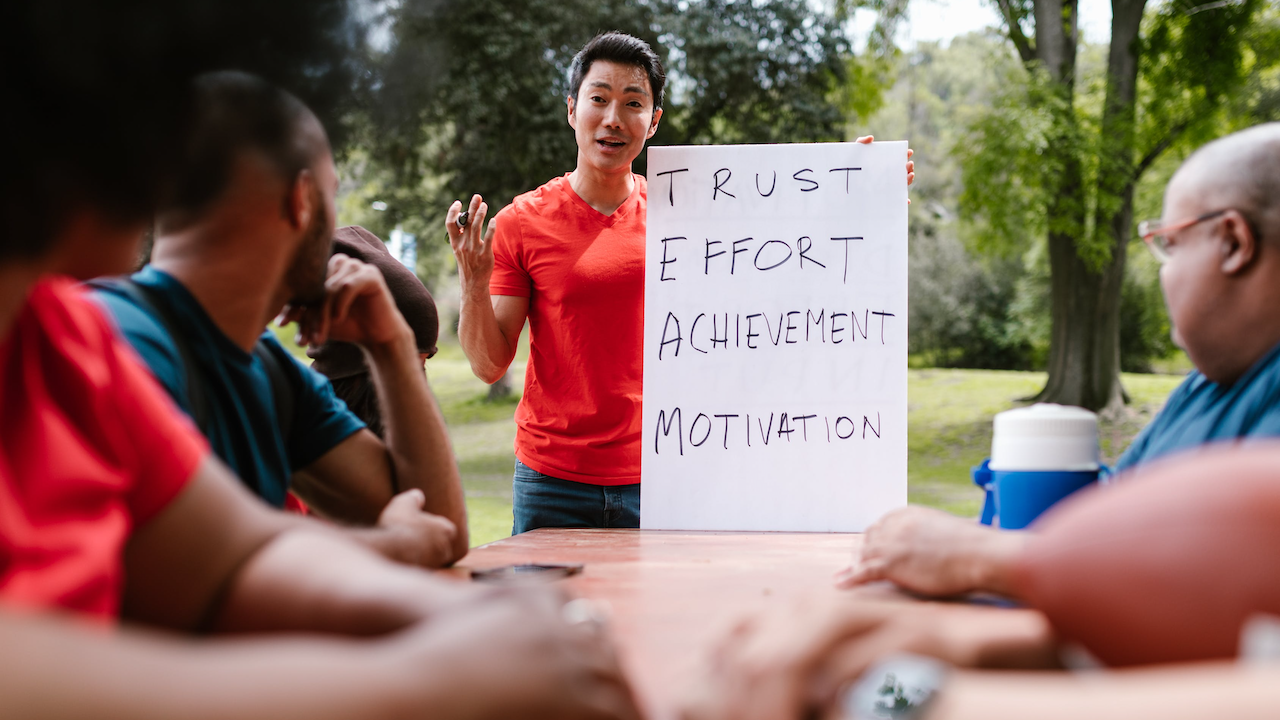Be a Great Leader of Today and Tomorrow: A Manager’s Guide
6 min read

You lead a team. You started with enthusiasm and the very best intentions to be a great leader for your team. Therefore, when facing a challenge, you are probably searching for other leaders’ best practices and success stories. You might be looking for a guide to becoming a great leader of today and tomorrow. You also partner with HR to enter into a leadership development program or guidance.
But have you asked yourself about the circumstances and context of those success stories and programs? Are those practices still the best ones for today, and most importantly, for tomorrow?
In other words, even when built with good intentions, leadership programs become outdated if based only on best practices and success models from the world it was yesterday. Failing to include the context and needs of the current world or the one that is coming. And no one is to blame for that. This is the ever changing reality we are facing now. Consequently, it is crucial to adapt and be flexible.
What are great leaders doing to grow and thrive?
Valuable skills for great leaders of today and tomorrow
So, what then makes a great leader? When can you say you are a great leader? A true leader, prepared to guide a workforce of today and tomorrow? The answer is: it depends. In other words, there is no general recipe and this is what makes each leader unique. Every company has its own specific set of capabilities needs, based on culture, industry, people etc.
There is no general recipe and this is what makes each leader unique.
However, there are several power skills we find valuable and foundational for each leader to start developing and practice:
- self-leadership, or the practice of understanding who you are, what are your values, identify your own emotions, triggers and control them. What you are passionate about. What are your goals. In other words, it begins with self-awareness and self-management . So, start by leading yourself.
- coaching, or guiding your people to grow and achieve personal and professional goals. Coaching is also about building trust, active listening and asking the right, powerful, questions.
- curiosity, or continuous learning and self-development. It is also about being open to new ideas, perspectives, experiences and people.
- storytelling, or how to share ideas and make your voice heard and understood in a more meaningful way.
- developing others. Period. One of your responsibilities as a leader is to grow your people. Create an environment where your people know and can do whatever they need to do without being told.
Undoubtedly, there are many other skills leaders need to be great, guide and grow a future-ready workforce. Such as: creativity, mobilising systems, conflict management, empowering etc. Some of them relate to all human beings, independently of their function and role. Although, this is a good start to become a better leader of today and prepare yourself for tomorrow.
How to be a great leader of today and tomorrow?
Roselinde Torres proposes the following three questions to ask yourself to define future-ready leadership, decide where do you place yourself and grow into an effective leader of tomorrow:
1. Where are you looking to anticipate the next change to your business model or your life?
The answer is in your calendar. Think of who you are meeting the most with? How are you spending your time? Are you discussing ideas or people? What’s on your reading list? And most importantly, what do you do next with this information?
2. What is the diversity measure of your personal and professional stakeholder network?
Do you expose yourself to a variety of people in terms of: cultural, biological, physical, socio-economic, functional and political differences? Great leaders are aware of the fact that diversity is a perpetual and boundless source of creativity, pattern identification and certainly, solutions. Diversity brings different perspectives and ways of working, communicating, approaching and understanding the same subject matter.
3. Are you courageous enough to abandon a practice that has made you successful in the past?
It’s natural to go with the familiar path and flow. Because it’s comfortable and it brings certainty. And an important part of our brain loves it. But great leaders are courageous enough to challenge themselves and others to think and act differently. Great leaders take risks and withstand those who tell you that you are wasting your time.
Gather different perspectives and grow
We’ve recently discussed surveys and how you can get the most out of it. Guess what?! When it comes to leadership development, an easy and yet effective instrument we recommend is a multi-stage, action-effect survey. This type of survey assesses the impact of managers’ actions on their team’s behaviors, actions, performance, motivation etc.
Above all, its main purpose is to discover different perspectives and growth areas for the manager. It is also helping you to identify critical gaps between manager’s perspective and the team’s.
In other words, adding these action-effect surveys will help you identify your current situation and what you can do next to grow, adapt and become a great leader.
Step one: Leadership persona
Firstly, start with identifying what defines a great leader within your company. What are the values, principles and behaviors the company promotes and needs to succeed? What other companies from the same (or similar) industries are doing? What’s the current worldwide context? Choose 3-5 major factors that define (as of now) a great leader. For example, one major factor determining great leadership might be Developing others.
Step two: What’s the action?
Secondly, for each major factor, think of 3-5 defining indicators. How will you measure it? What are the actions defining this factor? For example, for the above mentioned factor, an indicator might be Identifying growth opportunities (vertically or horizontally).
Step three: Action-effect magic
Thirdly, for each indicator think of 3-5 statements for each stakeholder (manager and team member, respectively) that characterise the above identified actions. Moreover, make sure the statements you are using for team members are mirroring the effect and impact of manager’s actions towards this indicator.
Following the same example, here are several statements that might be used:
Factor: Developing others
Indicator: Identifying growth opportunities (vertically or horizontally)
Statements for action-effect surveys:
Manager: I encourage my people to continuously learn and grow.
Team member: I incorporate learning in my daily activities and follow my growth plan.
Step four: Act
Analyze the results and identify gaps. Then, be curious and brainstorm on next steps. What can you start doing to become a greater leader? The answer is right in front of you, in the people you are leading.
Final thoughts
As Simon Sinek said in one of his talks, leadership is a choice. Not a rank. It takes a lot of work, effort and it is extremely uncomfortable to be a great leader of today and tomorrow. But at the same time, it is unimaginably rewarding and heartwarming. So tell your story and ask yourself – would your team do the same for you?










